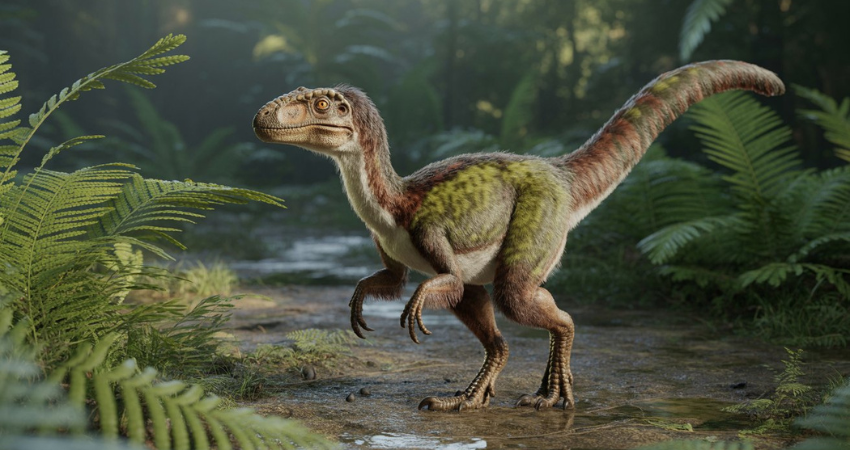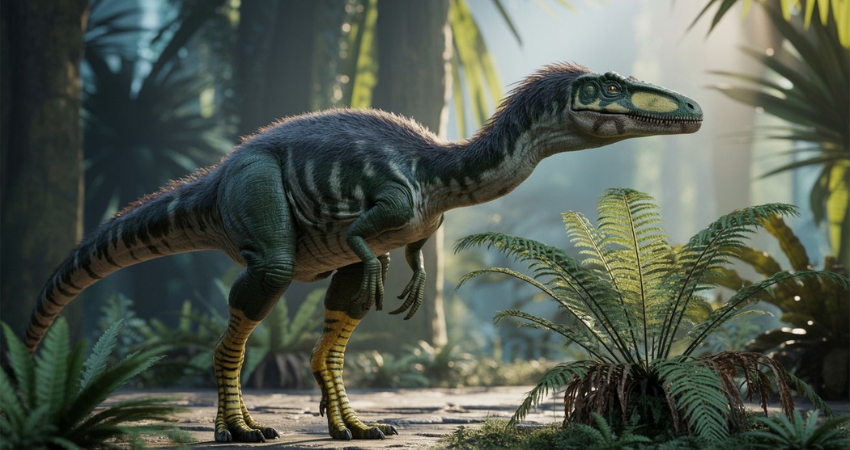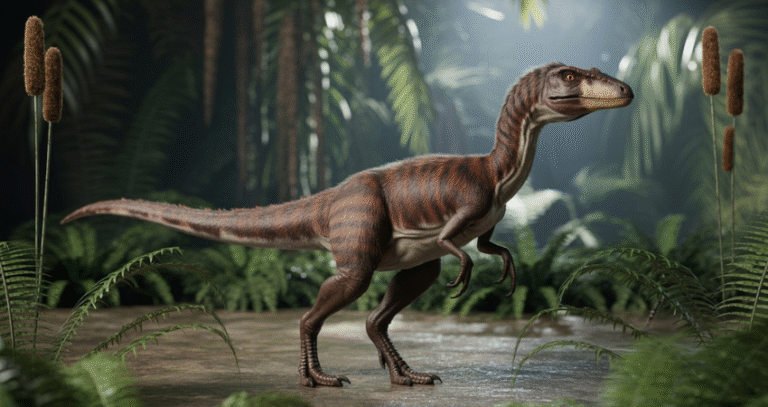Picture a world lost in time—a wild, windswept plain beneath the Cretaceous sun, teeming with strange giants and hungry predators. From the dust of ancient Patagonia, one mysterious hunter has stepped into the spotlight: hastovenator, a predator with claws like spears and a name that stirs the imagination.
This article dives into the bones, the science, and the drama behind this enigmatic dinosaur. Let’s dig in—pun intended.
Discovery of Hastovenator
The story begins in Argentina’s Neuquén Province, home to some of the most fossil-rich rock layers on Earth. In 2010, paleontologists unearthed a partial skeleton from the Huincul Formation, revealing traits unlike any dinosaur seen before. The discovery was officially published in 2019, sending ripples through the world of theropod research.
Naming the Predator
The name Hastovenator is as fierce as the creature itself. It means “Spear Hunter”—from the Latin hasta (spear) and venator (hunter). It’s a name that reflects its weapon-like claws and predatory nature.
Belonging to the Megaraptoridae family, Hastovenator stands among a unique group of large, carnivorous dinosaurs with elongated arms and deadly claws.
Geological Context
The Huincul Formation
Found in northwestern Patagonia, the Huincul Formation dates back roughly 95 million years to the Late Cretaceous period. This environment was hot, semi-arid, and full of life—from massive sauropods like Argentinosaurus to rival predators like Mapusaurus.
What the World Looked Like
Back then, South America was a wild mosaic of forests, floodplains, and rivers—a dangerous place where only the fittest survived. Hastovenator thrived here, competing with other fearsome carnivores.

Physical Characteristics
Size and Build
While fossils are incomplete, paleontologists estimate Hastovenator was around 6 to 8 meters (20–26 feet) long. It wasn’t the biggest megaraptorid, but its agility and deadly claws made it formidable.
Weaponized Anatomy
-
Arms: Long and powerful, unlike the tiny arms of T. rex.
-
Claws: Curved and sharp, ideal for slashing prey.
-
Skull & Teeth: The skull was narrow and snout-like, and teeth were blade-shaped—perfect for slicing through flesh.
Comparison With Other Theropods
Megaraptoridae: The Agile Predators
Megaraptorids are a unique group. Unlike bulky tyrannosaurs, these dinosaurs were graceful, fast, and clawed like nightmare cats.
Hastovenator shares features with cousins like:
-
Megaraptor
-
Australovenator
-
Aerosteon
What Makes Hastovenator Stand Out
Its limb structure, particularly the shape of certain vertebrae and pelvis bones, shows subtle differences that hint at evolutionary branching, possibly pointing to a new subgroup of megaraptorids.
Behavior and Hunting
Was Hastovenator a solo killer or part of a pack? While direct evidence is scarce, its anatomy suggests:
-
Ambush predation
-
Short bursts of speed
-
Possibly hunted small-to-medium prey
It might have stalked juvenile sauropods or scavenged from kills made by larger predators.
Diet and Feeding Mechanisms
This was no herbivore.
A Meat-Eater’s Toolkit:
-
Serrated teeth for tearing
-
Long arms for grabbing and holding
-
Claws for slashing and gutting
Its jaw structure and digestive capacity suggest it could handle both fresh kills and carrion—a flexible feeder in a tough world.
Importance in Evolutionary Tree
Hastovenator is more than just another dino—it’s a missing link.
Bridging the Gaps
It helps paleontologists understand how:
-
Megaraptorids evolved from early coelurosaurs
-
South American predators diversified post-Gondwana
It’s a snapshot in evolution, frozen in stone.
Paleoenvironment and Coexisting Species
Hastovenator didn’t live in isolation. It roamed among:
-
Argentinosaurus (huge herbivore)
-
Mapusaurus (another top predator)
-
Skorpiovenator (abelisaurid)
This ecosystem was a dinosaur dog-eat-dog world.
Scientific Debate and Challenges
Fossils are a puzzle—and Hastovenator’s bones are scattered pieces.
The Big Questions:
-
Is it a true megaraptorid or something else?
-
Was it fully grown or a juvenile?
Researchers argue over its classification, with some suggesting it could represent a new evolutionary offshoot.
Cultural and Scientific Impact
Hastovenator may not be as famous as T. rex or Velociraptor, but in Argentina, it’s becoming a scientific celebrity.
-
Featured in museum exhibitions
-
Inspiring local interest in paleontology
-
A symbol of Patagonia’s fossil richness

Recent Research and Ongoing Studies
New digs in the Huincul Formation may turn up more bones. Scientists are:
-
Using CT scans to study internal bone structure
-
Comparing DNA-free protein remnants
-
Digitally reconstructing its possible movements
Exciting discoveries could rewrite its story in coming years.
Why Hastovenator Matters
Dinosaurs like Hastovenator help us see the full spectrum of predatory evolution. They show us that not all apex hunters were titans—some were swift, clever, and deadly with a touch of finesse.
In the world of dinosaurs, size isn’t everything. Sometimes, the deadliest blade comes not in a roar—but in a rush of claws.
Conclusion
Hastovenator is more than just a fossil—it’s a window into the wild pulse of a long-lost world. With every bone unearthed, we get closer to understanding the tangled web of life that once roamed Patagonia.
If you’re fascinated by fast, fearsome, and mysterious dinosaurs, Hastovenator is your new obsession.
FAQs
1. Was Hastovenator bigger than T. rex?
Nope! T. rex was much larger—over 12 meters long—while Hastovenator topped out around 6 to 8 meters.
2. Is Hastovenator related to raptors like Velociraptor?
They’re distant cousins. Both are theropods, but Hastovenator belongs to Megaraptoridae, not Dromaeosauridae like Velociraptor.
3. Where can you see Hastovenator fossils?
Fossils are held in Argentinian museums, particularly in Neuquén Province, but they’re rarely on full display.
4. Was Hastovenator fast or slow?
Very likely fast. Its build suggests agility and speed—ideal for ambush attacks.
5. How complete is the fossil record of Hastovenator?
It’s fragmentary—mostly partial bones and vertebrae. That’s why there’s still much mystery around this dinosaur.
